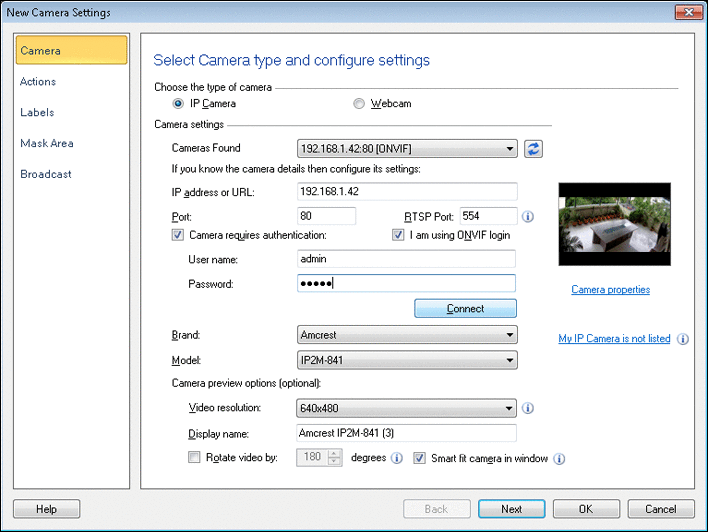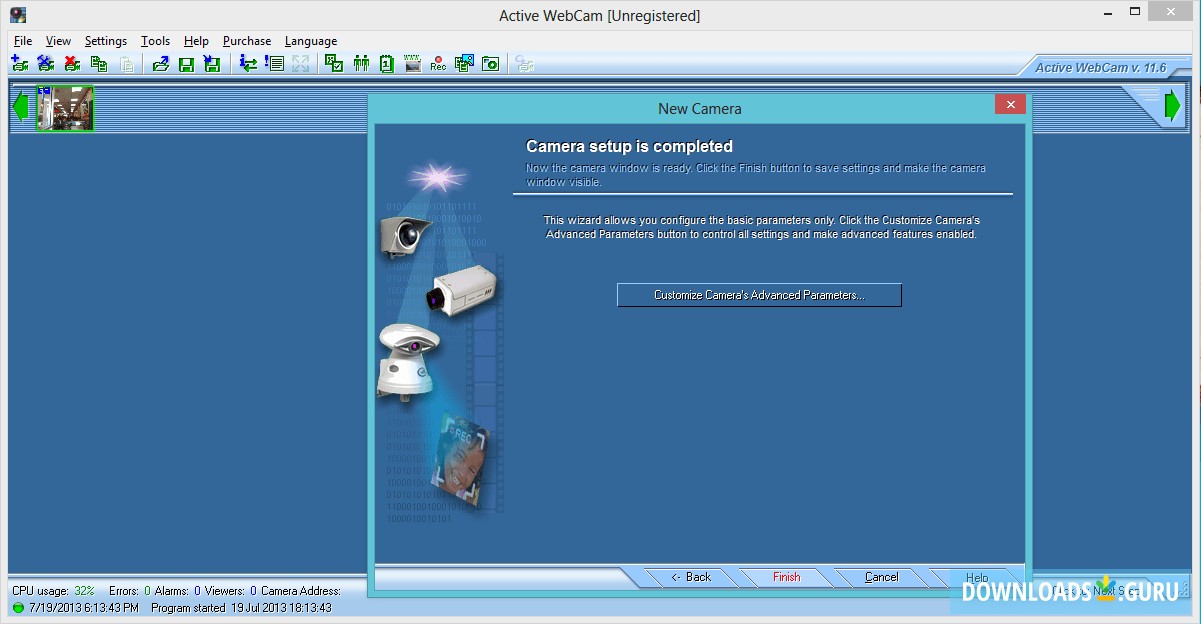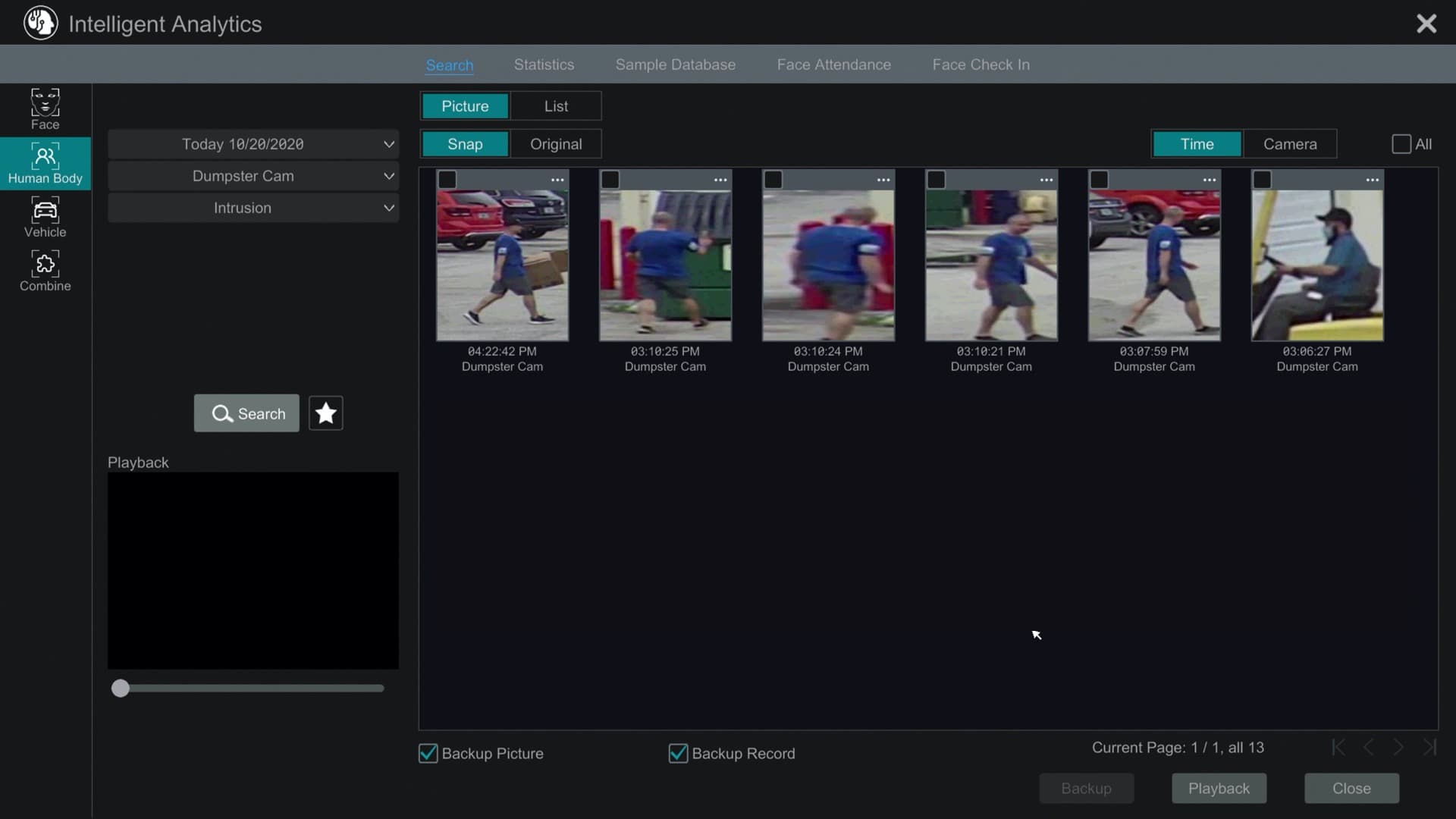

For example, camera’s RTSP port at 554 (LAN side) should be port forwarded to 554 (WAN side). Normally, you should port forward these camera ports so they are also accessible from the outside (WAN).
Ip cam viewer settings ip cam pro set up driver#
This happens when the driver actually asks the camera for it’s secondary ports like RTSP or MEDIA ports.
Ip cam viewer settings ip cam pro set up drivers#
Port Overrides – Only some drivers have these optional settings. H – Click for More Options (like invert pan/tilt). RTSP is listed under the ‘Generic URL’ brand.Ĭ – Hostname or IP address of camera. Onvif is listed under the ‘Unknown’ brand. When an IP Camera type device is selected in the Add/Edit screen, appropriate input fields are displayed (shown below).ī – Click to select camera type. Most network IP Cameras use some form of http/https protocol (unlike DVRs which tend to used custom network protocols). To add a camera, click the “Add Camera” button. To edit an existing camera, open the Manage Cameras screen, click on a camera row, and select “Edit Camera”. Save as Group – Save all enabled cameras as a group. Recall Group – Choose a group of cameras to enable. Use the grouping functions to organize cameras into small groups. When the table is in edit mode (shown below), the standard iOS table edit mode controls allow you to re-order and delete cameras.ī – Click the ‘-‘ button to delete camera. Scan Camera – Use this tool to help you find compatible drivers for any camera.Ĭlicking the Edit (A) button will put the table in edit mode. Import Cameras – Import camera settings from a file in the application documents directory. Long press on attachment (click on Android) and select to open with IP Cam Viewer to automatically import them.Įxport All Cams – Export all camera settings (regardless of enabled status) to application documents directory.

Click to toggle status.Īpp Settings – Setup application settings.Įmail Enabled Cams – Email enabled cameras to someone. Click again to exit edit mode.Ĭ – List of group(s) this camera is associated with.ĭ – Shows whether this camera is enabled/disabled. In addition, grouping of cameras can be used to manage large number of cameras and to minimize amount of resource usage in the mobile app.Ī – Click to enter standard iOS table edit mode where you can re-order camera order and delete cameras. Users are encouraged to Export their cameras (or Email to themselves) for backup. = 2.0 Manage CamerasĬommons tasks include adding, editing, deleting and re-ordering of cameras. Launch Cam URL – Launch browser interface for current camera. Motion Detection Off / On (built into camera)Īuto Sequence – Automatically rotate cameras periodically (set rate in App Settings). Zoom Out / In (optical zoom, not digital) To perform pan, tilt, and optical zoom open the PTZ Command Strip ( F).ī – This row of camera controls will vary from device to device (see Custom Controls below). Use 3 finger left/right swipe gestures to switch to prev/next enabled camera. When zoomed in, use 1 finger drag gestures to move within the zoomed image. Use 2 finger pinch to zoom gestures to perform digital zoom.

Once a connection has been established, controls which are supported by this camera will be enabled. On entry to this screen, most controls are disabled. For example: “Turn all light on/off” or “Turn all device motion detection on/off”. Mass Action – Perform an action of ALL enabled cameras. Manage Cameras – Add/edit/delete/re-order cameras. Recall Group – Choose a group of cameras to recall.Īuto Sequence – Automatically rotate groups periodically (set rate in App Settings).Īpp Settings – Change application settings. The number of columns in the matrix can be adjusted in the Application Settings screen.

Tap on a camera to enter the Detail View to control a camera. The Matrix View focuses on displaying all cameras in a video wall fashion. This screen allows you to initiate pan, tilt, optical zoom, audio and other custom controls. The Detail View displays a single camera, allowing you to use pinch to zoom and finger gestures for digital zoom. The Matrix View is normally the first screens you’ll see when you launch the application. All settings are stored on your iOS device. It does not use any intermediate servers which can collect your information. This application connects directly to your camera, DVRs, NVR, or Video Server.


 0 kommentar(er)
0 kommentar(er)
